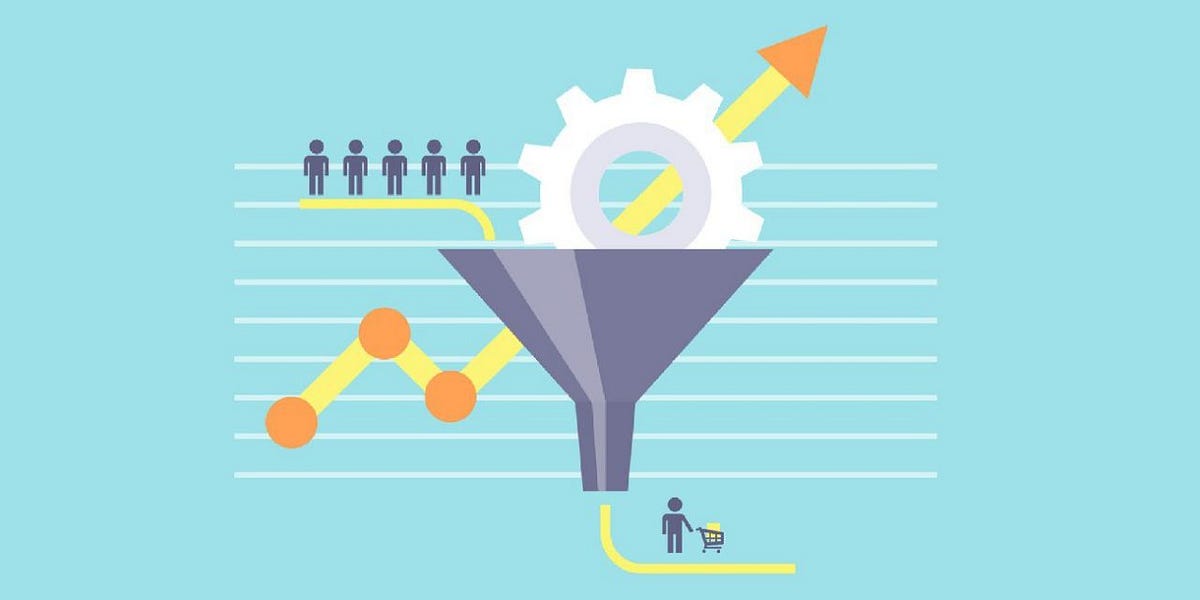How to Use Sales Funnels to Drive Conversions and Revenue
Are you struggling to convert website visitors into customers for your Business Altitude? Do you want to boost your revenue without spending a fortune on advertising? If so, you need to learn how to use sales funnels.
In this article, we will explain what sales funnels are and how you can use them to drive conversions and revenue for your Business Altitude. Whether you’re selling physical products, digital products, or services, a sales funnel can help you generate leads, nurture them, and make the sale.
I. Introduction
A. Definition of sales funnel
A sales funnel is a marketing framework that guides prospects through a series of steps towards becoming paying customers. The funnel typically consists of four stages: awareness, interest, decision, and action.
B. Importance of sales funnels for businesses
Sales funnels are critical for businesses because they allow you to convert website visitors into paying customers systematically. They also help you build a relationship with your prospects, which can lead to repeat business and referrals.
C. Overview of the article
In this article, we will show you how to create a sales funnel that will help you convert more leads into customers. We will cover the following topics:
* Creating a Sales Funnel
* Nurturing Leads
* Making the Sale
* Maximizing Revenue
II. Creating a Sales Funnel
A. Identifying the target audience
The first step in creating a sales funnel is to identify your target audience. Who are your ideal customers? What are their pain points, needs, and desires? Once you have a clear understanding of your target audience, you can create a lead magnet that will attract them to your website.
B. Creating a lead magnet
A lead magnet is a valuable free offer that you give away in exchange for your prospect’s email address. It can be an ebook, a checklist, a video, or any other content that solves a specific problem for your target audience. Once you have their email address, you can start nurturing them through a series of emails.
C. Building a landing page
A landing page is a web page that is designed to convert visitors into leads. It should be simple, clean, and focused on a single call to action: getting the visitor to opt-in to your email list. Your landing page should have a clear headline, a compelling offer, and a lead capture form.
D. Implementing an email sequence
Once someone has opted into your email list, you can start nurturing them through a series of emails. Your email sequence should be designed to build a relationship with your prospects, provide value, and eventually lead them towards making a purchase. Make sure to segment your email list based on the interests and behaviors of your subscribers.
III. Nurturing Leads
A. Sending targeted emails
As you nurture your leads through your email sequence, it’s important to send targeted emails that are tailored to their interests and needs. This can be done through segmentation and personalization, using the data you’ve gathered on your subscribers.
B. Providing value through content
One way to keep your subscribers engaged is by providing them with valuable content that addresses their pain points and interests. This can be done through blog posts, videos, podcasts, or any other form of content that your audience prefers.
C. Offering incentives
To encourage your subscribers to take action and move further down your sales funnel, it’s important to offer incentives such as discounts, free trials, or bonuses. These incentives should be aligned with their needs and desires, and should be communicated clearly in your emails.
IV. Making the Sale
A. Creating a sense of urgency
To increase the likelihood of making a sale, it’s important to create a sense of urgency in your offers. This can be done by using limited-time promotions, scarcity tactics, or countdown timers.
B. Using social proof
Social proof is a powerful tool for building trust and credibility with your prospects. This can be done by showcasing customer testimonials, case studies, or social media followers.
C. Crafting a compelling offer
Your offer should be tailored to your target audience and should provide a clear solution to their problem or desire. It should be communicated clearly and persuasively, using persuasive copywriting techniques.
V. Maximizing Revenue
A. Up-selling and cross-selling
Once you’ve made a sale, you can maximize your revenue by offering additional products or services that complement the original purchase. This can be done through up-selling or cross-selling, and can be a powerful way to increase customer lifetime value.
B. Offering high-ticket products
Another way to increase revenue is by offering high-ticket products or services that provide a premium solution to your customers’ needs. These products should be aligned with your target audience and should be communicated clearly in your sales funnel.
C. Providing excellent customer service
Finally, to maximize revenue and build long-term relationships with your customers, it’s important to provide excellent customer service. This includes responding to inquiries promptly, resolving issues quickly, and going above and beyond to exceed their expectations.
VI. Conclusion
In conclusion, sales funnels are a critical component of any successful business’s marketing strategy. By guiding prospects through a series of steps towards becoming paying customers, you can generate more leads, nurture them, and make the sale. To create a successful sales funnel, you need to identify your target audience, create a lead magnet, build a landing page, implement an email sequence, and make the sale. By following these steps and maximizing revenue through up-selling, cross-selling, and excellent customer service, you can grow your business and increase your revenue.
VII. FAQs
1. What is a sales funnel?
A sales funnel is a marketing framework that guides prospects through a series of steps towards becoming paying customers.
2. Why are sales funnels important for businesses?
Sales funnels are important for businesses because they allow you to convert website visitors into paying customers systematically.
What is a lead magnet?
3. A lead magnet is a valuable free offer that you give away in exchange for your prospect’s email address.
4. How can I create a sense of urgency in my offers?
You can create a sense of urgency in your offers by using limited-time promotions, scarcity tactics, or countdown timers.
5. How can I maximize revenue through up-selling and cross-selling?
To maximize revenue through up-selling and cross-selling, you should offer additional products or services that complement the original purchase and provide a premium solution to your customers’ needs.




